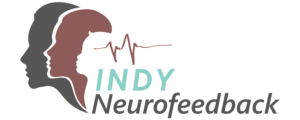Long COVID – Symptoms and Relief
Long COVID
Symptoms and Relief
Many people have experienced or are experiencing symptoms of “long COVID”. The Mayo Clinic explains that the long-term symptoms of the coronavirus impacts 1 in 5 people and may include the following physical ailments:
- fatigue
- fever
- shortness of breath
- cough
- joint and muscle pain
- heart-related symptoms
- digestive issues
- blood clots
- changes in menstrual cycle
- neurological symptoms
The neurological symptoms may include difficulty thinking or concentrating, headache, sleep problems, dizziness, pins-and-needles feeling, loss of smell or taste, depression, and anxiety (Mayo Clinic Staff, 2022).
While there is not yet a comprehensive understanding of why these post-COVID symptoms exist, there are studies being conducted to find alternative solutions. Orendáčová et al. (2022) conducted a pilot study determining the impact of neurofeedback therapy on post-COVID neurological symptoms. This study found a positive correlation between using neurofeedback’s Othmer method to decrease the symptoms of anxiety, fatigue and depression (Orendáčová et al., 2022).
Neurofeedback is a safe and effective way to help target the unwanted, long-term symptoms resulting post-COVID. For more information on scheduling, please visit indyneurofeedback.com.
References
Mayo Clinic Staff. (2022, June 28). Covid-19: Long-term effects. Mayo Clinic. Retrieved January 23, 2023, from https://www.mayoclinic.org/diseases-conditions/coronavirus/in-depth/coronavirus-long-term-effects/art-20490351
Orendáčová, M., Kvašňák, E., & Vránová, J. (2022). Effect of neurofeedback therapy on neurological post-COVID-19 complications (A pilot study). PloS one, 17(7), e0271350. https://doi.org/10.1371/journal.pone.0271350




 Those of us at INDY Neurofeedback were fascinated with a new study recently published in the medical journal
Those of us at INDY Neurofeedback were fascinated with a new study recently published in the medical journal  Why is it that a high-pitched scream causes us to drop everything and give 100% of our attention to the source of the noise?
Why is it that a high-pitched scream causes us to drop everything and give 100% of our attention to the source of the noise?
 Did you know that the rhythm of your breathing influences brain activity such as memory recall and emotional judgment?
Did you know that the rhythm of your breathing influences brain activity such as memory recall and emotional judgment? Although many associate ADHD or ADD diagnosis with children, the syndrome is not age specific. Since ADHD (Attention Deficit Hyperactivity Disorder) is the syndrome recognized by the American Medical Association, it is the term we reference here at INDY Neurofeedback.
Although many associate ADHD or ADD diagnosis with children, the syndrome is not age specific. Since ADHD (Attention Deficit Hyperactivity Disorder) is the syndrome recognized by the American Medical Association, it is the term we reference here at INDY Neurofeedback.